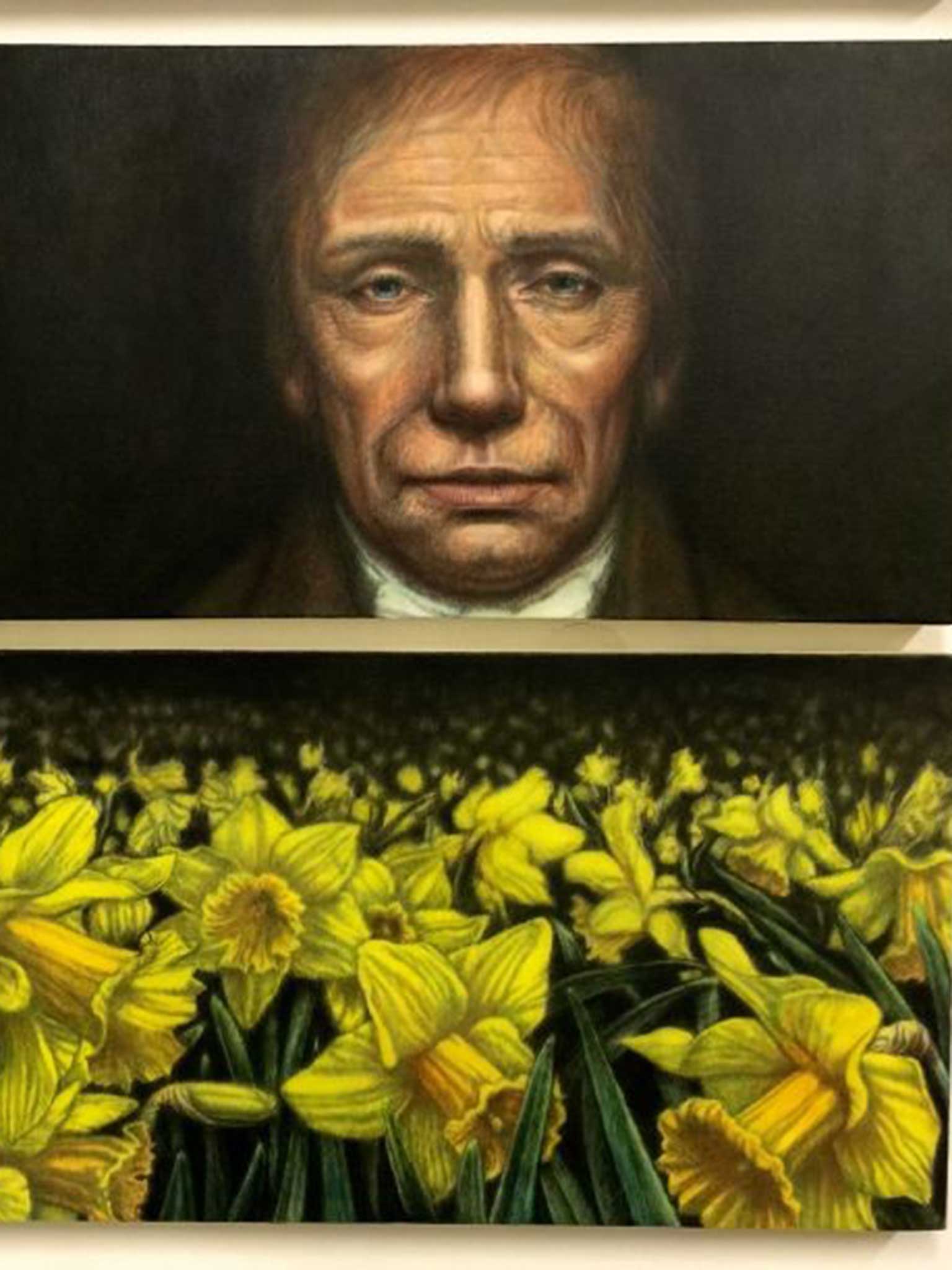Artist Hideyuki Sobue unveils first portrait of William Wordsworth in 200 years
The painting is the centrepiece of an exhibition to mark the 200th anniversary of what is said to be the world’s most famous poem: Wordsworth’s Daffodils

The first new portrait of William Wordsworth in two centuries years – depicting him much younger than in previous likenesses – is to go on display after a Japanese artist found a “life mask” made years before the poet became a Victorian celebrity.
The painting forms the centrepiece of an exhibition by Hideyuki Sobue which opens to mark the 200th anniversary of what is said to be the world’s most famous poem: Wordsworth’s “Daffodils”.
Sobue’s diptych features the first new painting of Wordsworth since he died, aged 80, in April 1850. It is based on a mask made by the artist Benjamin Robert Haydon using moulds of the poet’s face in June 1815 – the same year that the final version of “Daffodils” was published.
Most of the surviving images of Wordsworth show him in later life. But Sobue’s portrait captures him at the peak of his physical powers, when he was a keen gardener and walker who routinely trod 20 miles to Keswick for lunch and then walked back again.
“Most of the portraits are romanticised, but I wanted to capture the emotion of the poet, knowing that he was a keen outdoors man,” said Sobue, who has been living and working in the Lake District since 2005. “I was not satisfied with the images I saw. But when I came across the mask in my researches I was ecstatic.”
Sobue’s technique uses sumi ink, traditionally used in East Asian calligraphy, together with acrylic paints on canvas. He builds the images line by line. The work is being shown at Rydal Mount, the house near Ambleside in Cumbria where Wordsworth lived for most of his life, and where he published the definitive version of “Daffodils”.
The mask lies beneath the oriel window of the Upper Library in St John’s College, at the University of Cambridge. But Sobue came across it in the National Portrait Gallery’s online archive.
The centuries-old tradition of making life and death masks from moulds, capturing a person’s likeness for posterity, expanded in the 19th century thanks to the growing interest in phrenology.
According to Haydon’s diary, Wordsworth bore “like a philosopher” the trial of sitting with his face covered with plaster, and with straws up his nose to allow breathing, while the mould was made.
Sobue is a great admirer of Wordsworth’s work. He and the poet Gary Boswell worked on a collaborative project at Rydal Mount 10 years ago, in an attempt “to trace back to the poet’s spirituality and creativity from the perspective of our contemporary society”.
The new exhibition takes the “Daffodils” poem and the opening words “I wandered” as its inspiration.